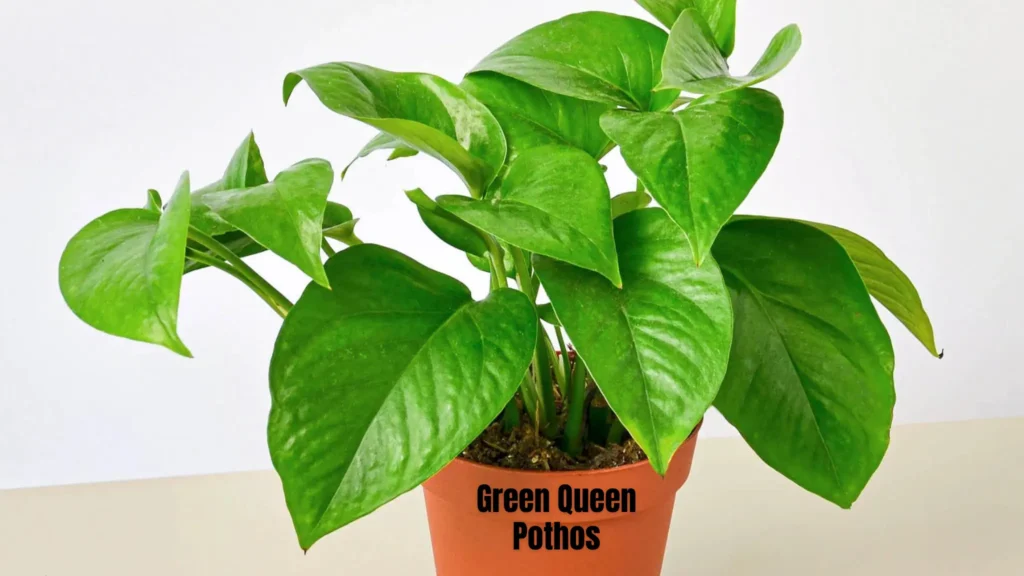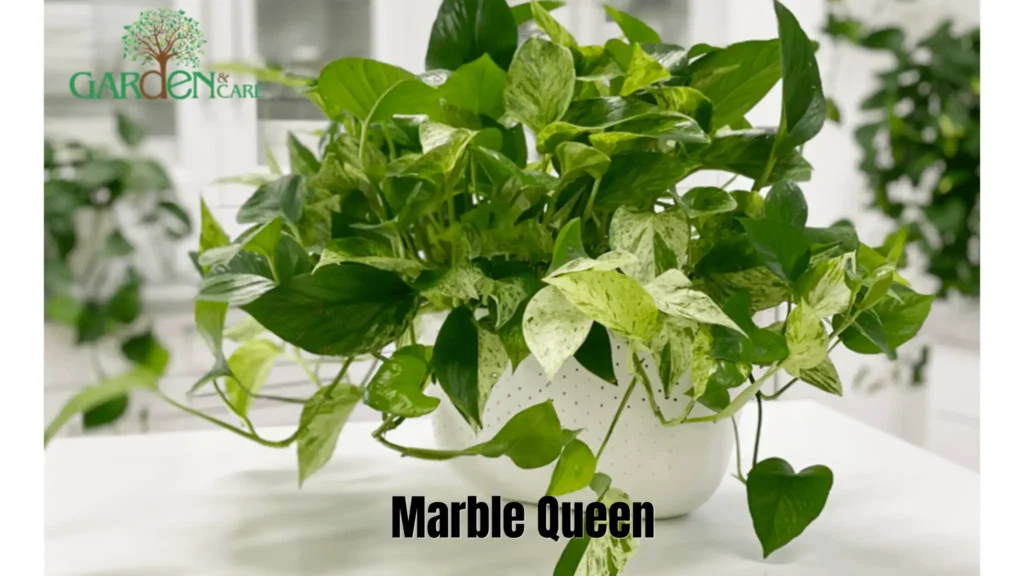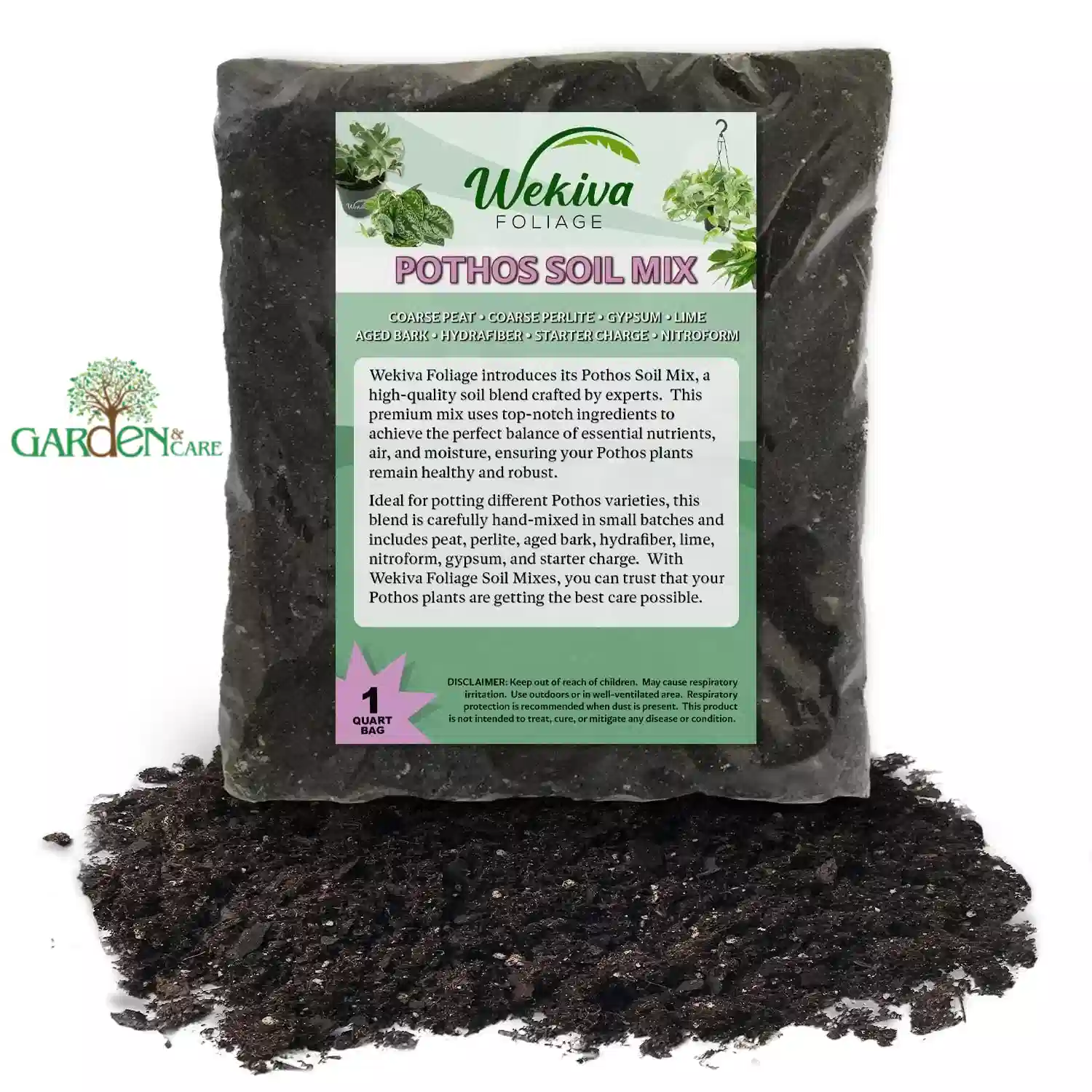Pothos, also called Devil’s Ivy, is one of the easiest plants to take care of. It’s perfect for beginners because it doesn’t need much attention and is hard to kill.
This plant comes from the island of Mo’orea in French Polynesia. Over time, it has spread to tropical areas all over the world.
Pothos can live in many places inside your home. It grows well in both bright light and low light. Even if you forget to water it sometimes, it will still grow.
If you’re new to plants or just want one that’s simple to care for, pothos is a great choice!
🌱 Botanical Background
The scientific name for pothos is Epipremnum aureum. This is how scientists classify it:
- Genus: Epipremnum
- Species: aureum
In the past, it was also called Scindapsus aureus and Rhaphidophora aurea. These were older names used before scientists agreed on its current name.
One unique thing about pothos is that it almost never blooms indoors. This is because the plant doesn’t produce enough gibberellin, which is a natural chemical it needs to grow flowers.
Even without flowers, pothos is loved for its beautiful, trailing leaves and how easy it is to care for!
🍃 Popular Pothos Varieties
Pothos plants come in many beautiful types, each with unique features. Here are some of the most popular ones:
1. Green Queen

This is the classic pothos variety. It has lush, green leaves and grows quickly, making it perfect for beginners.
2. Marble Queen

Marble Queen has stunning white and green patterned leaves. It grows a bit slower than other varieties but is worth the wait for its beauty.
3. Satin Pothos (Scindapsus pictus)

Though not a true pothos, Satin Pothos looks similar and needs the same care. Its silvery, satin-like leaves make it a favorite for many plant lovers.
Additional Varieties
- Golden Pothos: Bright green leaves with golden streaks. A popular choice for its cheerful look.
- Neon Pothos: Features bold, lime-green leaves that stand out in any space.
- Manjula Pothos: A rare variety with creamy white, green, and silver-tinted leaves.
🧪 Care Requirements for Pothos
Keeping your pothos healthy is easy if you follow these simple care tips:
Light
- Pothos loves bright, indirect sunlight.
- It can handle low light but may lose its beautiful color patterns if kept in the dark for too long.
Watering
- Let the top inch of soil dry before watering again.
- Too much water can cause root rot, while too little might make the leaves droop.
Soil
- Use a potting mix that drains well.
- Always choose pots with drainage holes to avoid soggy roots.
Humidity & Temperature
- Pothos thrives in moderate humidity (50–60%).
- Keep the temperature between 65–75°F (18–24°C) for the best growth.
Fertilization
- Feed your pothos with liquid fertilizer once or twice a month in spring and summer.
- Skip feeding in the colder months, as the plant grows slower.
✂️ Pruning and Styling Pothos
Pruning
- Trim your pothos regularly to remove long, thin vines and promote fuller, bushier growth.
- Always cut just above a leaf node to encourage new shoots.
Styling Options
- Hanging Baskets: Let the vines cascade for a natural, flowing look.
- Trellises or Moss Poles: Help your pothos climb upward, mimicking its natural growth in the wild.
- Ceiling Displays: Train the vines along ceilings or walls for a unique decorative touch.
🌱 Propagation Techniques for Pothos
How to Care for Pothos (Epipremnum aureum): A Complete Guide for Beginners
Pothos, also called Devil’s Ivy, is one of the easiest plants to take care of. It’s perfect for beginners because it doesn’t need much attention and is hard to kill.
Propagating pothos is simple and rewarding, making it a great way to multiply your plants or share them with friends. Here’s a detailed guide:
Stem Cuttings: The Easiest Method
1. Choose Healthy Vines
- Look for vines with at least 4–6 inches in length and a few healthy leaves. Ensure the vine is free from pests or diseases.
2. Make the Cut
- Use clean, sharp scissors or pruners to cut just below a node (the small bump where leaves or roots grow).
3. Prepare for Rooting
- Remove the lower leaves near the cut end to expose the nodes. These nodes will be submerged for rooting.
4. Rooting in Water
- Place the cuttings in a jar of clean water, ensuring the nodes are fully submerged.
- Change the water every few days to keep it fresh and prevent bacteria buildup.
- You should see roots sprouting within 1–2 weeks.
5. Rooting in Soil
- Alternatively, plant the cuttings directly into moist potting soil.
- Keep the soil consistently damp but not soggy.
- New roots will develop in about 2–4 weeks.
6. Transition to a Pot
- Once the roots are 2–3 inches long, transfer the cutting into a pot with well-draining soil.
- Water thoroughly and place the pot in bright, indirect light for optimal growth.
Pro Tips for Successful Propagation
- Use a rooting hormone for faster root development (optional).
- Propagation works best during spring and summer when the plant is actively growing.
- Avoid exposing the cuttings to direct sunlight to prevent drying out.
⚠️ Potential Issues with Pothos
Even though pothos is easy to care for, you may encounter some problems. Here’s a quick guide to identify and address common issues:
Pests
- Resistant but Not Immune: Pothos usually resists pests but can occasionally suffer from mealybugs or scale insects.
- Solution: Wipe leaves with a damp cloth and apply neem oil or insecticidal soap if infestations occur.
Toxicity
- Harmful if Ingested: Pothos contains calcium oxalate crystals, which are toxic to pets and humans if ingested.
- Precaution: Keep the plant out of reach of children and pets to prevent accidental consumption.
Common Problems and Fixes
- Yellowing Leaves
- Cause: Often due to overwatering.
- Fix: Check the soil; let the top inch dry out before watering again. Ensure the pot has proper drainage.
- Cause: Often due to overwatering.
- Brown Leaf Tips
- Cause: May indicate low humidity.
- Fix: Increase humidity by misting the leaves, using a humidifier, or placing the pot near a tray of water.
- Cause: May indicate low humidity.
- Loss of Variegation
- Cause: Insufficient light exposure.
- Fix: Move the plant to a spot with bright, indirect sunlight to restore its vibrant variegation.
- Cause: Insufficient light exposure.
🏡 More Creative Display Ideas for Pothos
1. Macrame Plant Hangers
Hang your pothos in a beautiful macrame plant hanger. This adds a boho-chic touch to your room and lets the vines trail freely. It’s perfect for windows, corners, or even bathroom spaces where the humidity helps the plant thrive.
2. Shelf Displays
Place pothos on floating shelves or bookcases. Let the vines cascade down the sides of the shelves for a soft, natural look that breaks up the straight lines of furniture and adds greenery at eye level.
3. Table Centerpieces
Use small pots of pothos as living centerpieces on dining or coffee tables. Pair them with candles or decorative stones for a simple, fresh vibe that brightens up meal times or social gatherings.
4. Window Sills
Line your window sills with several small pothos pots. The natural light helps the plants stay healthy, and the trailing vines soften the edges of the windows, giving your room a cozy, garden-like feel.
5. Ladder Planters
Use a wooden ladder as a creative plant stand. Place pothos pots on each step, and let the vines grow downward. This makes a vertical green display that’s perfect for small spaces or patios.
6. Terrariums or Glass Containers
Place pothos cuttings in clear glass containers or terrariums filled with water or soil. This stylish option shows off the roots and stems, creating an interesting visual effect and making it easy to watch your plant grow.
7. Desk Decor
Keep a small pothos plant on your work desk to improve your workspace. The greenery helps reduce stress and boosts focus, and its trailing vines add a touch of nature to your office or study area.
8. Staircase Accents
Place pothos pots on each stair step or along the railing. As the vines trail and grow, they create a soft, natural decoration that brightens up otherwise plain staircases.
📚 Conclusion
Pothos is one of the easiest and most popular houseplants to grow. Whether you are new to gardening or have plenty of experience, pothos can fit perfectly into your home. Its ability to survive in low light and tolerate irregular watering makes it a low-maintenance choice that still looks beautiful. With just a little care—like the right light, watering, and occasional pruning—you can enjoy vibrant, trailing vines that brighten any room. Plus, its many varieties and creative display options let you add a personal touch to your indoor garden. Overall, pothos is a reliable and attractive plant that brings natural beauty and freshness to your living space.





Leave a Reply to Best Soil Mix for Healthy and Fast-Growing Pothos Cancel reply